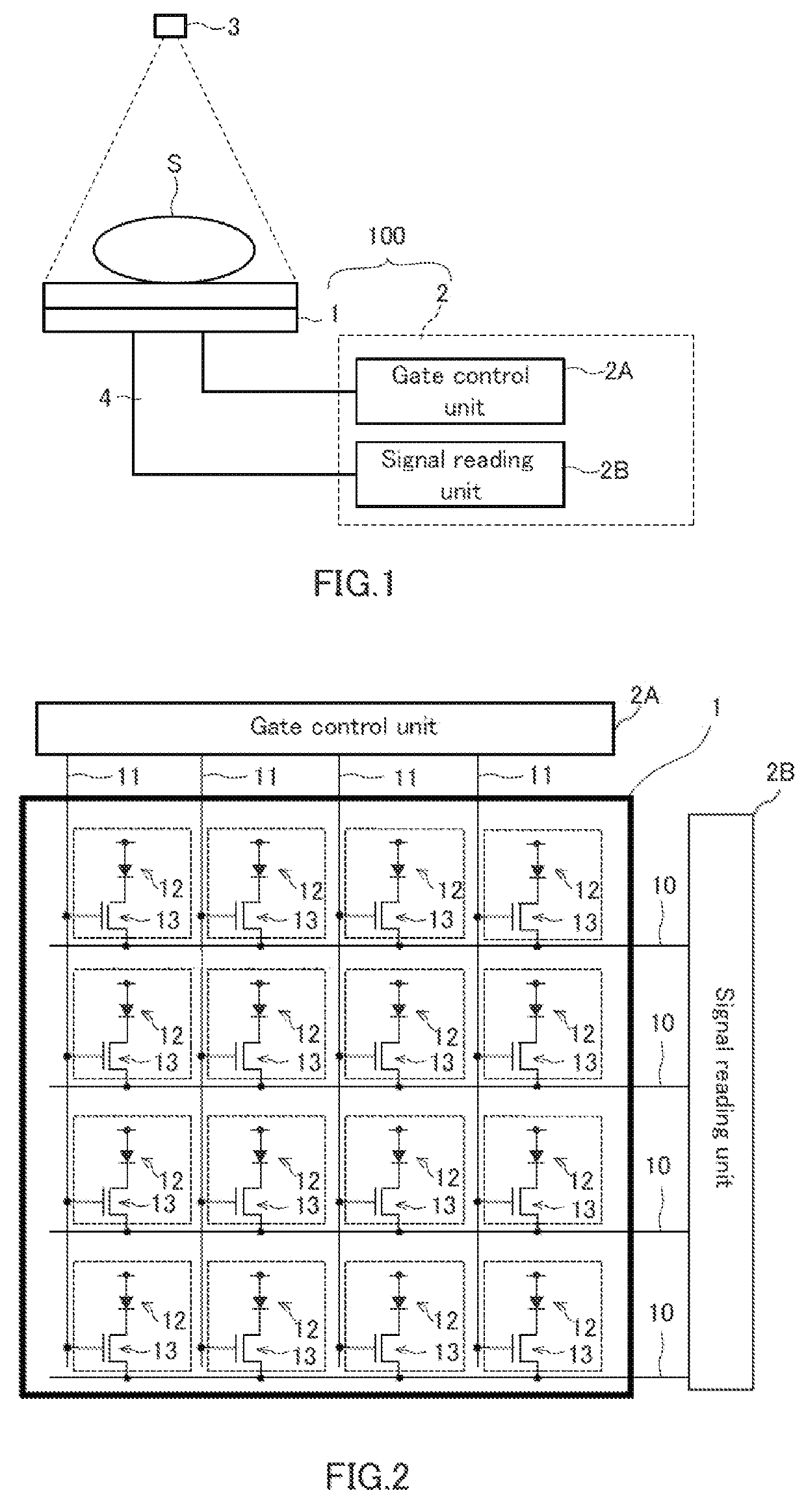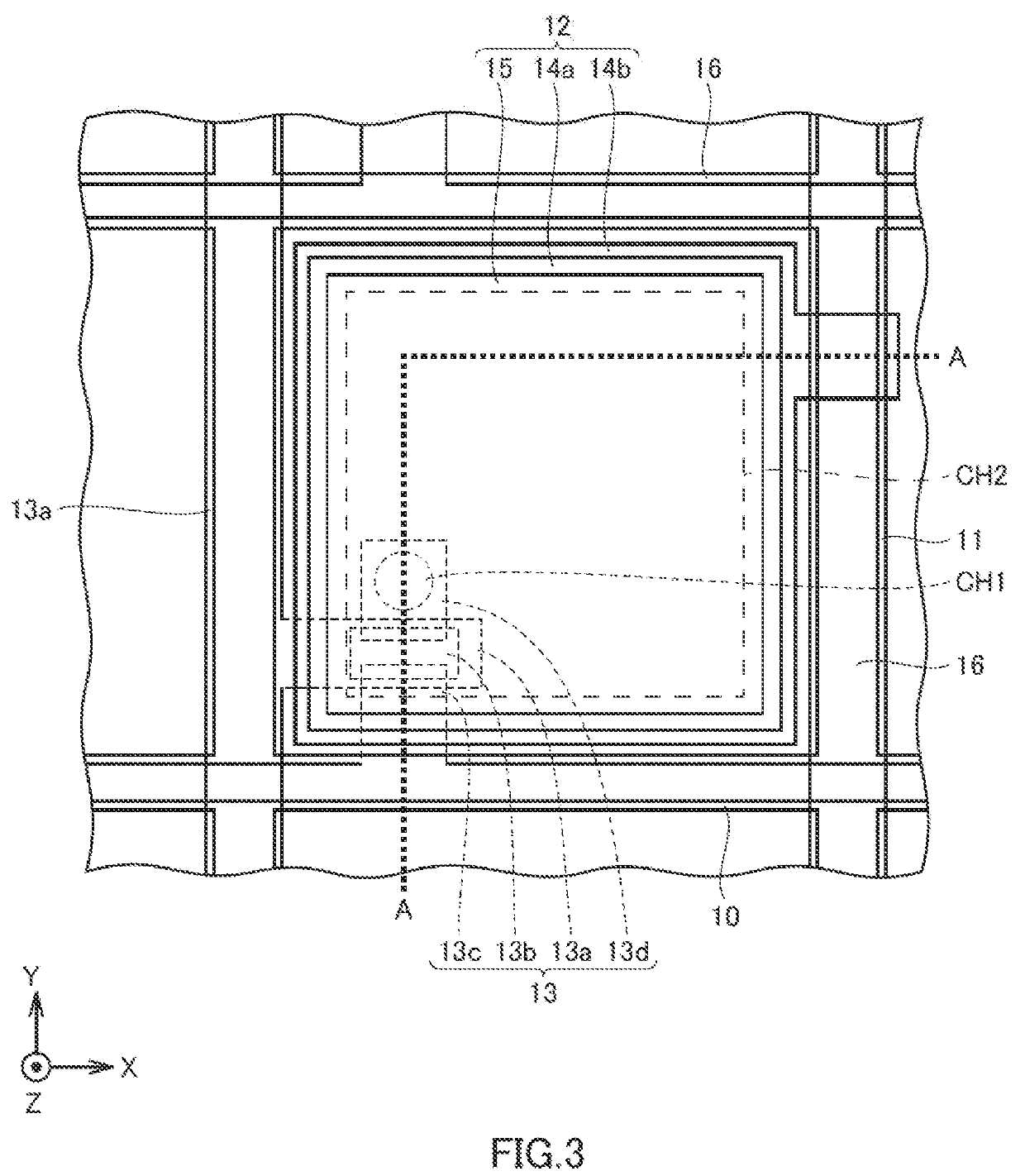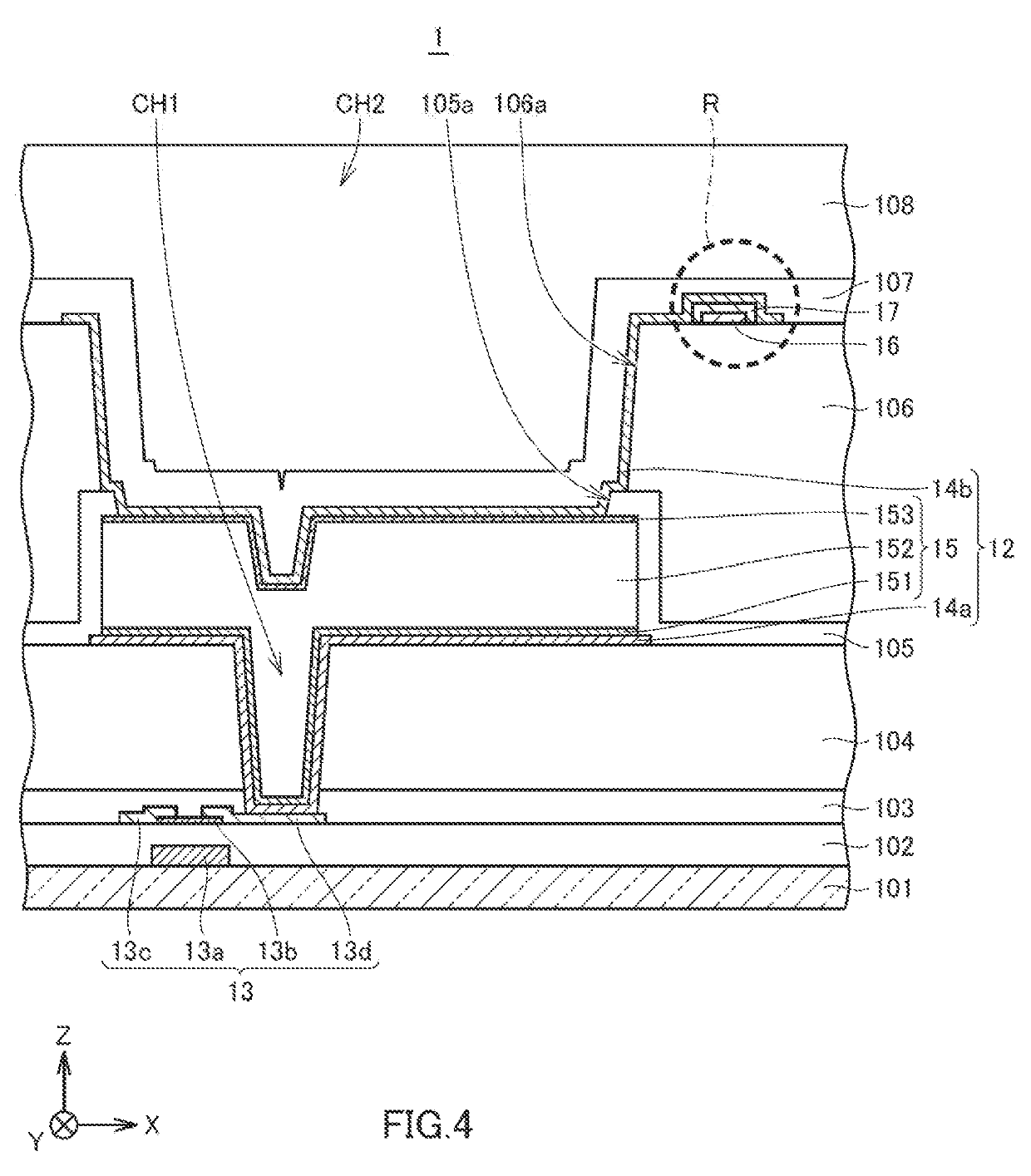Active matrix substrate, x-ray imaging panel including same, and producing method thereof
- Summary
- Abstract
- Description
- Claims
- Application Information
AI Technical Summary
Benefits of technology
Problems solved by technology
Method used
Image
Examples
embodiment 1
(Configuration)
[0067]FIG. 1 schematically illustrates an X-ray imaging device in the present embodiment. The X-ray imaging device 100 includes an active matrix substrate 1 and a control unit 2. The control unit 2 includes a gate control unit 2A and a signal reading unit 2B. X-rays are projected from the X-ray source 3 to an object S, and X-rays transmitted through the object S are converted into fluorescence (hereinafter referred to as scintillation light) by a scintillator 4 provided above the active matrix substrate 1. The X-ray imaging device 100 picks up the scintillation light with the active matrix substrate 1 and the control unit 2, thereby acquiring an X-ray image.
[0068]FIG. 2 is a schematic diagram showing a schematic configuration of the active matrix substrate 1. As shown in FIG. 2, a plurality of source lines 10, and a plurality of gate lines 11 intersecting with the source lines 10 are formed in the active matrix substrate 1. The gate lines 11 are connected with the gat...
embodiment 2
[0126]As the present embodiment, a method for producing the active matrix substrate 1 of Embodiment 1, which is different from the method of Embodiment 1, is described. The following description describes steps different from those in Embodiment 1.
[0127]After the steps shown in FIGS. 6A to 6I, the opening 105a of the third insulating film 105 is formed in Embodiment 1; in the present embodiment, however, the step shown in FIG. 6I is subsequently followed by a step of forming the fourth insulating film 106 by using, for example, slit coating (see FIG. 7A).
[0128]Thereafter, photolithography and wet etching are carried out so that the opening 106a of the fourth insulating film 106 is formed on the photoelectric conversion layer 15 (see FIG. 7B).
[0129]Subsequently, photolithography and wet etching are carried out so that the opening 105a of the third insulating film 105 is formed on an inner side with respect to the opening 106a of the fourth insulating film 106. Here, for wet etching, ...
embodiment 3
[0133]As the present embodiment, a method for producing the active matrix substrate 1 of Embodiment 1, which is different from the method of Embodiment 2, is described. The following description describes steps different from those in Embodiment 2.
[0134]In Embodiment 2 described above, the opening 105a of the third insulating film 105 is formed after the step shown in FIG. 7B; in the present embodiment, however, after the step shown in FIG. 7B, the metal film 160 obtained by laminating molybdenum-niobium (MoNb), aluminum (Al), and molybdenum-niobium (MoNb) sequentially in this order by using, for example, sputtering is formed on the third insulating film 105 and the fourth insulating film 106 (see FIG. 8A).
[0135]Subsequently, photolithography and wet etching are carried out so as to pattern the metal film 160. Through these steps, the bias line 16 is formed on an outer side with respect to the photoelectric conversion layer 15, on the fourth insulating film 106 (see FIG. 8B).
[0136]T...
PUM
 Login to View More
Login to View More Abstract
Description
Claims
Application Information
 Login to View More
Login to View More - R&D
- Intellectual Property
- Life Sciences
- Materials
- Tech Scout
- Unparalleled Data Quality
- Higher Quality Content
- 60% Fewer Hallucinations
Browse by: Latest US Patents, China's latest patents, Technical Efficacy Thesaurus, Application Domain, Technology Topic, Popular Technical Reports.
© 2025 PatSnap. All rights reserved.Legal|Privacy policy|Modern Slavery Act Transparency Statement|Sitemap|About US| Contact US: help@patsnap.com



